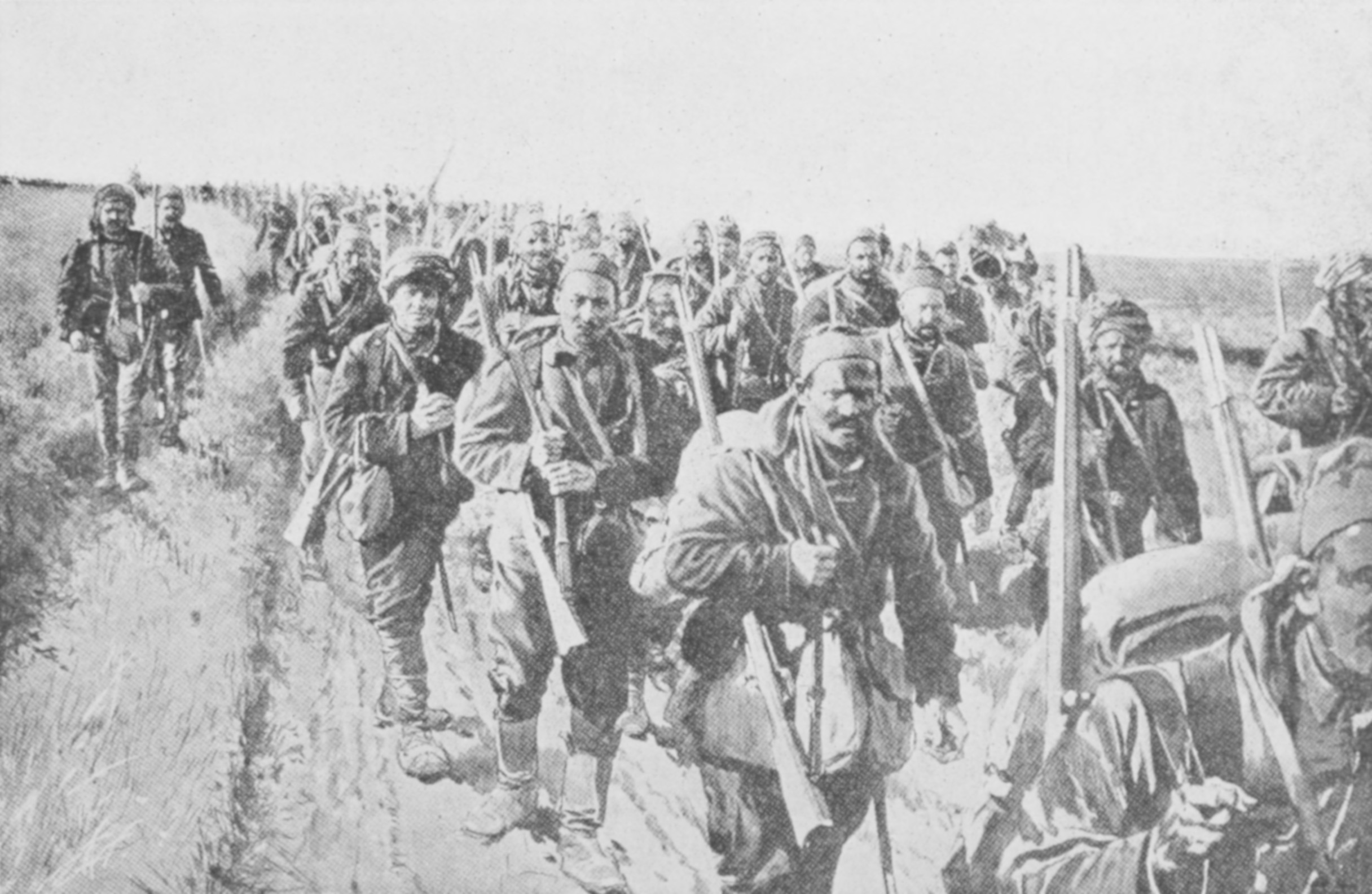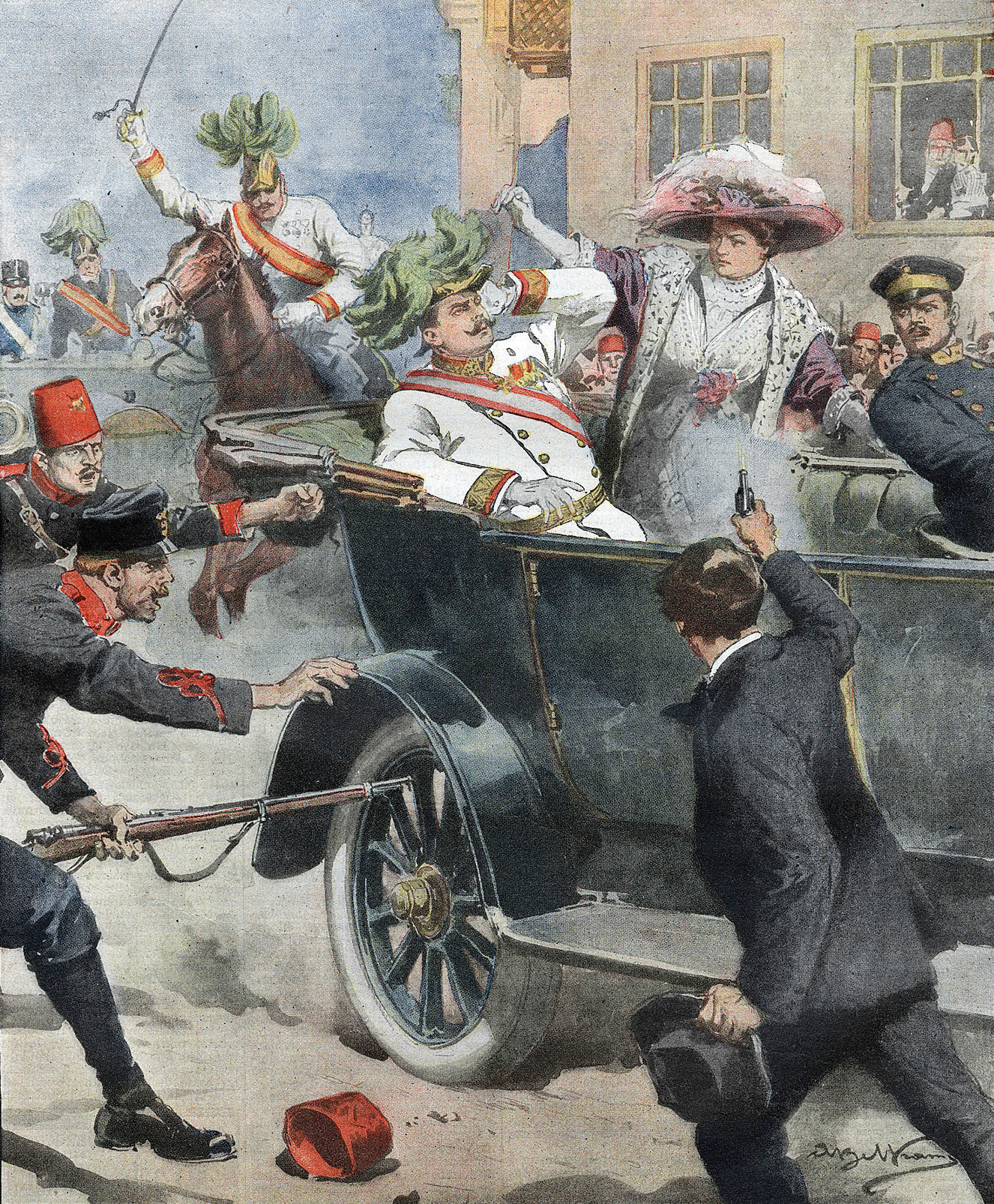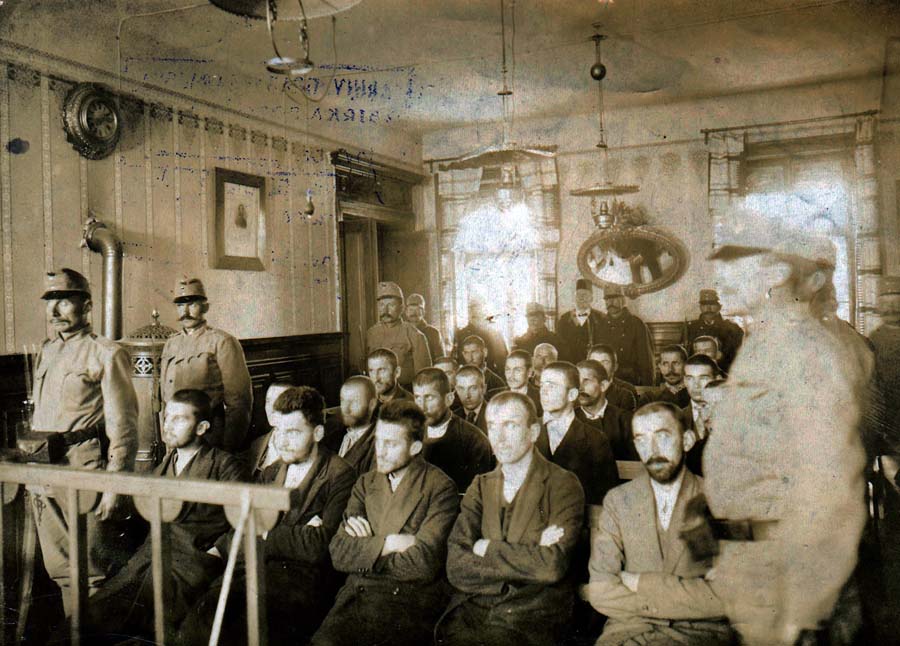|
Battle Of Kolubara
The Battle of Kolubara ( sr-Cyrl, Колубарска битка, ) was fought between Austria-Hungary and Serbia in November and December 1914, during the Serbian Campaign of 1914. It commenced on 16 November, when the Austro-Hungarians under the command of Oskar Potiorek reached the Kolubara river during their third invasion of Serbia that year, having captured the strategic town of Valjevo and forced the Serbian army to undertake a series of retreats. The Serbs withdrew from Belgrade on 29–30 November, and the city soon fell under Austro-Hungarian control. On 2 December, the Serbian army launched a surprise counterattack all along the front. Valjevo and Užice were retaken by the Serbs on 8 December. The Austro-Hungarians retreated to Belgrade, which 5th Army commander Liborius Ritter von Frank deemed untenable. The Austro-Hungarians abandoned the city between 14 and 15 December and retreated into Austria-Hungary, allowing the Serbs to retake their capital the followi ... [...More Info...] [...Related Items...] OR: [Wikipedia] [Google] [Baidu] |
Serbian Campaign Of World War I
The Serbian campaign was a series of military expeditions launched in 1914 and 1915 by the Central Powers against the Kingdom of Serbia during the First World War. The first campaign began after Austria-Hungary declared war on Serbia on 28 July 1914. The campaign, dubbed a " punitive expedition" () by the Austro-Hungarian leadership, was under the command of Austrian General Oskar Potiorek. It ended after three unsuccessful Austro-Hungarian invasion attempts were repelled by the Serbians and their Montenegrin allies. The victory of the Royal Serbian Army at the battle of Cer is considered the first Allied victory in World War I, and the Austro-Hungarian Army's defeat by Serbia has been called one of the great upsets of modern military history. The second campaign was launched, under German command, almost a year later, on 6 October 1915, when Bulgarian, Austro-Hungarian, and German forces, led by Field Marshal August von Mackensen, successfully invaded Serbia fr ... [...More Info...] [...Related Items...] OR: [Wikipedia] [Google] [Baidu] |
Sixth Army (Austria-Hungary)
The Austro-Hungarian Sixth Army was a field army of the Austro-Hungarian Army that fought during World War I as part of the Balkanstreitkräfte. Actions The Sixth Army was formed in 1914 and the Austro-Hungarian mobilization following its declaration of war on Serbia and Russia. The Sixth Army was put under the command of Gen. Oskar Potiorek, who also was commander of the entire Balkan Front. Before the start of the invasion of Serbia Potiorek demanded that all the Serbs be removed from its units. Between August and December 1914, the 6th Army fought in the Serbian Campaign and suffered such enormous casualties that it was disbanded on 27 December 1914. It participated in the * Battle of Drina (September - October 1914) * Battle of Kolubara (November - December 1914). The Sixth Army was reestablished in January 1918 on the Italian Front, where it remained active until the end of the War. It participated in the * Battle of the Piave River (June 1918) * Battle of Vittorio Ve ... [...More Info...] [...Related Items...] OR: [Wikipedia] [Google] [Baidu] |
Sava
The Sava, is a river in Central Europe, Central and Southeast Europe, a right-bank and the longest tributary of the Danube. From its source in Slovenia it flows through Croatia and along its border with Bosnia and Herzegovina, and finally reaches Serbia, feeding into the Danube in its capital, Belgrade. The Sava is long, including the Sava Dolinka headwater rising in Zelenci, Slovenia. It is the largest List of tributaries of the Danube, tributary of the Danube by volume of water, and the second-largest after the Tisza in terms of catchment area () and length. It drains a significant portion of the Dinaric Alps region, through the major tributaries of Drina, Bosna (river), Bosna, Kupa, Una (Sava), Una, Vrbas (river), Vrbas, Lonja, Kolubara, Bosut (river), Bosut and Krka (Sava), Krka. The Sava is one of the longest rivers in Europe and among the longest tributaries of another river. The population in the Sava River basin is estimated at 8,176,000, and is shared by three capit ... [...More Info...] [...Related Items...] OR: [Wikipedia] [Google] [Baidu] |
July Crisis
The July Crisis was a series of interrelated diplomatic and military escalations among the Great power, major powers of Europe in mid-1914, Causes of World War I, which led to the outbreak of World War I. It began on 28 June 1914 when the Serbs of Bosnia and Herzegovina, Bosnian Serb nationalist Gavrilo Princip assassinated Archduke Franz Ferdinand of Austria, Archduke Franz Ferdinand, heir presumptive to the Austria-Hungary, Austro-Hungarian throne, and his wife Sophie, Duchess of Hohenberg. A complex web of alliances, coupled with the miscalculations of numerous political and military leaders (who either regarded war as in their best interests, or felt that a general war would not occur), resulted in an outbreak of hostilities amongst most of the major European states by early August 1914. Following the murder, Austria-Hungary sought to inflict a military blow on Kingdom of Serbia, Serbia, to demonstrate its own strength and to dampen Serbian support for Yugoslavism, Yugoslav ... [...More Info...] [...Related Items...] OR: [Wikipedia] [Google] [Baidu] |
Sarajevo
Sarajevo ( ), ; ''see Names of European cities in different languages (Q–T)#S, names in other languages'' is the Capital city, capital and List of cities in Bosnia and Herzegovina, largest city of Bosnia and Herzegovina, with a population of 275,524 in its administrative limits. The Sarajevo metropolitan area with its surrounding municipalities has a population of 592,714 people. Located within the greater Sarajevo valley of Bosnia (region), Bosnia, it is surrounded by the Dinaric Alps and situated along the Miljacka River in the heart of the Balkans, a region of Southeastern Europe. Sarajevo is the political, financial, social, and cultural centre of Bosnia and Herzegovina and a prominent centre of culture in the Balkans. It exerts region-wide influence in entertainment, media, fashion, and the arts. Due to its long history of religious and cultural diversity, Sarajevo is sometimes called the "Jerusalem of Europe" or "Jerusalem of the Balkans". It is one of a few major Europea ... [...More Info...] [...Related Items...] OR: [Wikipedia] [Google] [Baidu] |
Archduke Franz Ferdinand Of Austria
Archduke Franz Ferdinand Carl Ludwig Joseph Maria of Austria (18 December 1863 – 28 June 1914) was the heir presumptive to the throne of Austria-Hungary. His Assassination of Archduke Franz Ferdinand, assassination in Sarajevo was the most immediate cause of World War I. Franz Ferdinand was the eldest son of Archduke Karl Ludwig of Austria, the younger brother of Franz Joseph I of Austria, Emperor Franz Joseph I of Austria. Following Mayerling incident, the death of Rudolf, Crown Prince of Austria, Crown Prince Rudolf in 1889 and the death of Karl Ludwig in 1896, Franz Ferdinand became the heir presumptive to the Austro-Hungarian throne. His courtship of Sophie, Duchess of Hohenberg, Sophie Chotek, a lady-in-waiting, caused conflict within the imperial household, and their morganatic marriage in 1900 was only allowed after he renounced his descendants' rights to the throne. Franz Ferdinand held significant influence over the military, and in 1913 he was appointed inspec ... [...More Info...] [...Related Items...] OR: [Wikipedia] [Google] [Baidu] |
Assassination Of Archduke Franz Ferdinand Of Austria
The assassination of Archduke Franz Ferdinand was one of the key events that led to World War I. Archduke Franz Ferdinand of Austria, heir presumptive to the Austro-Hungarian throne, and his wife, Sophie, Duchess of Hohenberg, were assassinated on 28 June 1914 by Bosnian Serb student Gavrilo Princip. They were shot at close range while being driven through Sarajevo, the provincial capital of Bosnia and Herzegovina, formally annexed by Austria-Hungary in 1908. Princip was part of a group of six Bosnian assassins together with Muhamed Mehmedbašić, Vaso Čubrilović, Nedeljko Čabrinović, Cvjetko Popović and Trifko Grabež coordinated by Danilo Ilić; all but one were Bosnian Serbs and members of a student revolutionary group that later became known as Young Bosnia. The political objective of the assassination was to free Bosnia and Herzegovina of Austria-Hungarian rule and establish a common South Slav (" Yugoslav") state. The assassination precipitated the July Cr ... [...More Info...] [...Related Items...] OR: [Wikipedia] [Google] [Baidu] |
Gavrilo Princip
Gavrilo Princip ( sr-Cyrl, Гаврило Принцип, ; 25 July 189428 April 1918) was a Bosnian Serb student who assassinated Archduke Franz Ferdinand, heir presumptive to the throne of Austria-Hungary, and his wife Sophie, Duchess von Hohenberg, in Sarajevo on 28 June 1914. The assassination of the Archduke and his wife set off the July Crisis, a series of events that within one month led to the outbreak of World War I. Princip was born in western Bosnia to a poor Serb family. At the age of 13, he was sent to Sarajevo, the capital of Austrian-occupied Bosnia, to study at the Merchants' School. He later transferred to the gymnasium, where he became politically aware. In 1911, he joined Young Bosnia, a secret local society aiming to free Bosnia from Austrian rule and achieve the unification of the South Slavs. After attending anti-Austrian demonstrations in Sarajevo, he was expelled from school and walked to Belgrade, Serbia, to continue his education. During the Fir ... [...More Info...] [...Related Items...] OR: [Wikipedia] [Google] [Baidu] |
Bosnian Serb
The Serbs of Bosnia and Herzegovina ( sr-Cyrl, Срби Босне и Херцеговине, Srbi Bosne i Hercegovine), often referred to as Bosnian Serbs ( sr-cyrl, босански Срби, bosanski Srbi) or Herzegovinian Serbs ( sr-cyrl, херцеговачки Срби, hercegovački Srbi), are native and one of the three constituent nations of the country, predominantly residing in the political-territorial entity of Republika Srpska. Most declare themselves Eastern Orthodox Christians and speakers of the Serbian language. Serbs have a long and continuous history of inhabiting the present-day territory of Bosnia and Herzegovina, and a long history of statehood in this territory. Slavs settled the Balkans in the 7th century and the Serbs were one of the main tribes who settled the peninsula including parts of modern-day Herzegovina. Parts of Bosnia were ruled by the Serbian prince Časlav in the 10th century before his death in 960. The territories of Duklja, including ... [...More Info...] [...Related Items...] OR: [Wikipedia] [Google] [Baidu] |
Užice
Užice ( sr-cyr, Ужице, ) is a List of cities in Serbia, city and the administrative centre of the Zlatibor District in western Serbia. It is located on the banks of the river Đetinja. According to the 2022 census, the city proper has a population of 54,965. The City municipality of Užice ( sr-cyrl, Градска општина Ужице, Gradska opština Užice) is one of two Municipalities and cities of Serbia, city municipalities (with the City municipality of Sevojno) which constitute the City of Užice. According to the 2022 census, the city itself has a population of 48,539 while the city administrative area has 69,997 inhabitants. History Ancient era The region surrounding Užice was settled by Illyrians, specifically the Parthini and the Celtic-influenced Autariatae tribes. Their tombs are found throughout the region. In the 3rd century BC, the Scordisci featured prominently after the Gallic invasion of the Balkans. The region was conquered by the Roman Empire i ... [...More Info...] [...Related Items...] OR: [Wikipedia] [Google] [Baidu] |
Belgrade
Belgrade is the Capital city, capital and List of cities in Serbia, largest city of Serbia. It is located at the confluence of the Sava and Danube rivers and at the crossroads of the Pannonian Basin, Pannonian Plain and the Balkan Peninsula. The population of the Belgrade metropolitan area is 1,685,563 according to the 2022 census. It is one of the Balkans#Urbanization, major cities of Southeast Europe and the List of cities and towns on the river Danube, third-most populous city on the river Danube. Belgrade is one of the List of oldest continuously inhabited cities, oldest continuously inhabited cities in Europe and the world. One of the most important prehistoric cultures of Europe, the Vinča culture, evolved within the Belgrade area in the 6th millennium BC. In antiquity, Thracians, Thraco-Dacians inhabited the region and, after 279 BC, Celts settled the city, naming it ''Singidunum, Singidūn''. It was Roman Serbia, conquered by the Romans under the reign of Augustus and ... [...More Info...] [...Related Items...] OR: [Wikipedia] [Google] [Baidu] |
Serbian Army
The Serbian Army () is the land-based and the largest component of the Serbian Armed Forces. Its organization, composition, weapons and equipment are adapted to the assigned missions and tasks of the Serbian Armed Forces, primarily for operations on land. It is subordinated to the Serbian Ministry of Defense. History Originally established in 1830 as the Army of Principality of Serbia and after Serbia's independence it subsequently grew in size and was renamed the Royal Serbian Army. After the World War I it was incorporated into the newly established Royal Yugoslav Army which was in turn transformed into Yugoslav Ground Forces of the Yugoslav People's Army after the World War II. The Serbian Army in its current form has been active since 2006 when Serbia restored its independence. Missions The Serbian Army is responsible for defending the sovereignty and territorial integrity of Serbia from foreign hostiles; participating in peacekeeping operations; and providing humanitar ... [...More Info...] [...Related Items...] OR: [Wikipedia] [Google] [Baidu] |






